The glyph type in Bb11-21 is
hipu, and - as I
can remember - in the G text
there was a hipu also in
Gb4-17:
|
The
rongorongo
glyphs
seem to
refer to
the grid
of right
ascension
days and
therefore
April 23
(Bb11-33)
at
Mira /
Khambalia
should
be ca 16
days
before
these
stars
returned
to
visibility
(in day
129
resptively
in 312).
Although
due to
my
assumption
of *64
precessional
right
ascension
days
down to
the
Golden
Era of
the Bull
these
day
number
need to
be
adjusted
with +16
days in
order to
accommodate
for the
ancient
rule of
return
to
visibility
(49 + 16
= 65).
As I
have
hinted
below
this
fact may
be
responsible
for how
half a
year
later
than the
true
heliacal
dates
the
corresponding
nakshatra
day
numbers
evidently
are 16
days
lower
than the
intended
numbers.
664
(October
26) for
instance,
when
71
Virginis
returned
to
visibility
after
her
close
encounter
with the
rays
from the
rising
Sun, was
16 days
after
October
10, the
true
heliacal
right
ascension
day. The
number
of
glyphs
on side
b of the
A tablet
=
664.
Observation
of the
stars at
the Full
Moon
were not
impeded
by the
rays
from the
rising
Sun. 296
(October
23) -
129 (May
9) = 167
= 183
(July 4)
- 16.
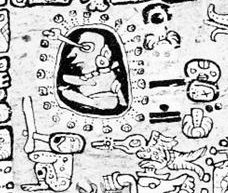 |
|
JAN 27 |
28 |
7 |
FEBR 5
(36) |
6 (53 -
16 = 37) |
11 |
FEBR 18
(65 - 16) |
 |
 |
 |
 |
 |
|
Bb11-11
(850) |
Bb11-12
(430) |
Bb11-20 |
Bb11-21
(860) |
Bb11-33
(872) |
|
April 1
(91) |
2 |
April 10
(100) |
11 (466) |
23
(St
George
†) |
|
The Legs
(*11.4) |
The Whip
(*12.4) |
The Knee
(*20) |
δ
Phoenicis
(*21) |
Mira = ο
Ceti
(*33) |
|
Oct 1
(274 =
290 - 16) |
2 |
Oct 10
(648 =
664 - 16) |
11 (284
= 300 -
16) |
Oct 23
(296) |
|
Alioth
(*194) |
Minelauva
(*195) |
71
Virginis
(*203) |
No star
listed
(*204) |
Khambalia
(*216.4) |
|
Niu.
Palm
tree,
coconut
tree;
hua niu,
coconut.
Vanaga.
Coconut,
palm,
spinning
top. P
Pau.,
Ta.:
niu,
coconut.
Mgv.:
niu,
a top;
niu
mea,
coconut.
Mq.:
niu,
coconut,
a top.
Churchill.
The
fruit of
miro.
Buck. T.
1.
Coconut
palm. 2.
Sign for
peace.
Henry.
The
sense of
top lies
in the
fact
that the
bud end
of a
coconut
shell is
used for
spinning,
both in
the
sport of
children
and as a
means of
applying
to
island
life the
practical
side of
the
doctrine
of
chances.
Thus it
may be
that in
New
Zealand,
in
latitudes
higher
than are
grateful
to the
coconut,
the
divination
sense
has
persisted
even to
different
implements
whereby
the
arbitrament
of fate
may be
declared.
Churchill
2.
Nikau.
Mgv.:
The coco
palm.
Ta.:
niau,
coconut
leaf.
Ha.:
niau,
stem of
the
coconut
leaf.
Ma.:
nikau,
an areca
palm.
Churchill.
Mgv.:
niu,
the
coconut
palm
when
young,
ripening
into
nikau.
... the
ni
of New
Caledonia
leads us
to infer
that
niu
was
anciently
a
composite
in which
ni
carried
at least
some
sort of
generic
sense,
it being
understood
that
this
refers
to those
characteristics
which
might
strike
the
islanders
as
indicating
a genus.
In
composition
with
kau
tree we
should
then see
nikau,
the
ni-tree,
serving
in
Mangareva
for the
coconut
palm, in
New
Zealand
for the
characteristic
palm (Areca
sapida)
of that
land, in
Tahiti
as
niau
for
coconut
leaf,
and as
niau
in
Hawaii
for the
leaf
stalk of
the
coconut.
The
ni-form
is found
in
Micronesia,
and in
the
Marshall
Islands
ni
is the
coconut.
Churchill
2.
Nika.
'Savage
tribes
knew the
Pleiades
familiarly,
as well
as did
the
people
of
ancient
and
modern
civilization;
and
Ellis
wrote of
the
natives
of the
Society
and
Tonga
Islands,
who
called
these
stars
Matarii,
the
Little
Eyes:
The two
seasons
of the
year
were
divided
by the
Pleiades;
the
first,
Matarii
i nia,
the
Pleiades
Above,
commenced
when, in
the
evening,
those
stars
appeared
on the
horizon,
and
continued
while,
after
sunset,
they
were
above.
The
other
season,
Matarii
i raro,
the
Pleiades
Below,
began
when, at
sunset,
they
ceased
to be
visible,
and
continued
till, in
the
evening,
they
appeared
again
above
the
horizon. Gill
gives a
similar
story
from the
Hervey
group,
where
the
Little
Eyes are
Matariki,
and at
one time
but a
single
star, so
bright
that
their
god
Tane
in envy
got hold
of
Aumea,
our
Aldebaran,
and,
accompanied
by
Mere,
our
Sirius,
chased
the
offender,
who took
refuge
in a
stream.
Mere,
however,
drained
off the
water,
and
Tane
hurled
Aumea
at the
fugitive,
breaking
him into
the six
pieces
that we
now see,
whence
the
native
name for
the
fragments,
Tauono,
the Six,
quoted
by
Flammarion
as
Tau,
both
titles
singularly
like the
Latin
Taurus.
They
were the
favorite
one of
the
various
avelas,
or
guides
at sea
in night
voyages
from one
island
to
another;
and, as
opening
the
year,
objects
of
worship
down to
1857,
when
Christianity
prevailed
throughout
these
islands.' (Allen)
 |
|
... When
the
'Crooked
Claw' (Khambalia)
- the
reaper's
instrument
- was
seen at
the Full
Moon in
April 23
it
portended
death of
the
southern
summer
year.
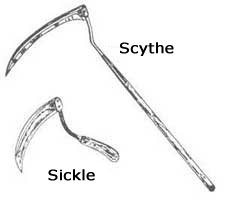
And when
Mira was
at the
Full
Moon in
October
23 it
was the
opposite,
the
death of
the
winter
year:
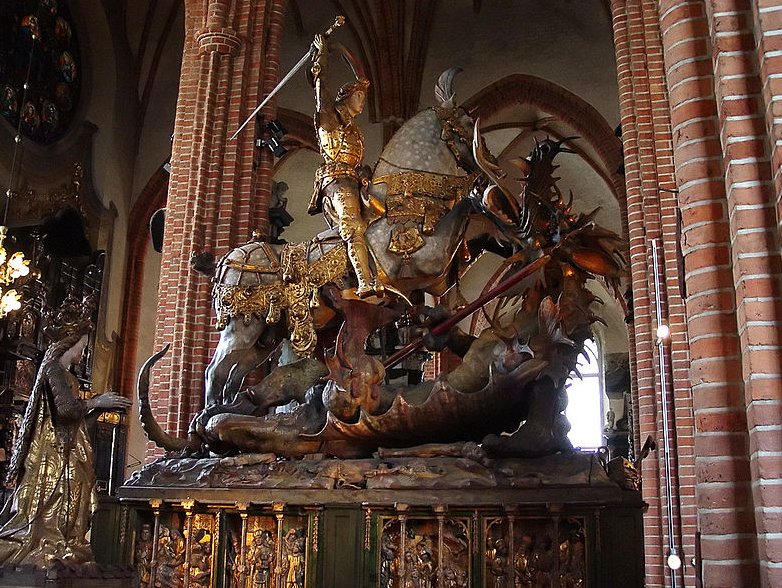 |
Hipu.
Calabash, shell,
cup, jug,
goblet, pot,
plate, vase,
bowl, any such
receptacle;
hipu hiva,
melon, bottle;
hipu
takatore,
vessel; hipu
unuvai,
drinking glass.
P Mgv.: ipu,
calabash, gourd
for carrying
liquids. Mq.:
ipu, all
sorts of small
vases, shell,
bowl,
receptacle,
coconut shell.
Ta.: ipu,
calabash, cup,
receptacle.
Churchill.
|
 |
 |
349 |
 |
|
hipu |
Gb4-17 |
Bb11-21 |
|
bottle gourd |
April 26
(116) |
April
11 (466) |

It seems reasonable
to here read a pair of
light and water -
the necessary
twin ingredients for
agricultural growth:
|
erua
ra manu
|
kua
oho |
 |
 |
|
light |
water |
Possibly the
words of
Metoro
therefore meant
it was
time for the
2nd 'year of
water' to go
away,
because 100
days beyond
the end of
the old year was
here.
Oho.
1. To
go:
ka-oho!
go! go away!
(i.e.
'goodbye'
said by the
person
staying
behind);
ka-oho-mai
(very
often
contracted
to:
koho-mai),
welcome!
(lit.: come
here);
ku-oho-á te
tagata,
the man has
gone.
Ohoga,
travel,
direction of
a journey;
ohoga-mai,
return.
2. Also
rauoho,
hair.
Vanaga. 1.
To delegate;
rava oho,
to root. 2.
To go, to
keep on
going, to
walk, to
depart, to
retire;
ka oho,
begone,
good-bye;
oho amua,
to preced;
oho mai,
to come, to
bring;
oho arurua,
to sail as
consorts;
hakaoho,
to send, a
messenger.
3. Tehe
oho te
ikapotu,
to abut,
adjoin;
mei nei tehe
i oho mai ai
inei te
ikapotu,
as far as,
to; kai
oho, to
abstain, to
forego;
hakaoho,
to put on
the brakes.
4. The head
(only in the
composite
rauoho,
hair).
Churchill.
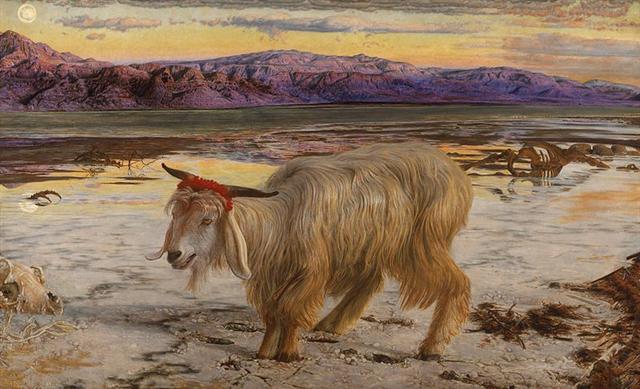
|
 |
 |
|
Bb11-20
(859) |
Ab8-84
(664) |
|
8 * 59 =
472
85 * 9 =
765 |
6 * 64 =
384
66 * 4 =
264 |
|
472 -
384 = 88
765 +
264 =
1029
88 + 290
= 378
(Saturn) |
|
Synodic
cycles: |
|
Mercury |
115.88 |
|
Venus |
583.92 |
|
Earth |
364.0
= π
*
115.88 |
|
Mars |
779.96 |
|
Jupiter |
398.88
=
115.88
+
135 |
|
Saturn |
378.09 |
|
Uranus |
369.66 |
... In China,
every year about
the beginning of
April, certain
officials called
Sz'hüen
used of old to
go about the
country armed
with wooden
clappers. Their
business was to
summon the
people and
command them to
put out every
fire. This was
the beginning of
the season
called
Han-shih-tsieh,
or 'eating of
cold food'. For
three days all
household fires
remained extinct
as a preparation
for the solemn
renewal of the
fire, which took
place on the
fifth or sixth
day after the
winter solstice
[Sic!] ...
... The
Mahabharata
insists on
six
as the
number of
the Pleiades
as well as
of the
mothers of
Skanda
and gives a
very broad
and wild
description
of the birth
and the
installation
of
Kartikeya
'by the
assembled
gods ... as
their
generalissimo',
which is
shattering,
somehow,
driving home
how little
one
understands
as yet. The
least which
can be said,
assuredly:
Mars was
'installed'
during a
more or less
close
conjunction
of all
planets; in
Mbh. 9.45
(p. 133) it
is stressed
that the
powerful
gods
assembled
'all poured
water upon
Skanda,
even as the
gods had
poured water
on the head
of Varuna,
the lord of
waters, for
investing
him with
dominion'.
And this
'investiture'
took place
at the
beginning of
the Krita
Yuga,
the Golden
Age
...

The Mayas
were reading
their texts from
right to
left, and
before light
had arrived
it would be
useless to
water a
plant (a
tree), it
could only
result in a
rotten
state.
... In the present
context 'mouth' has
an additional
connotation, given
that it refers in
part to Heart of
Earth, the deity
called 'Mundo'
today. This is the
great Mesoamerican
earth deity, the
ultimate swallower
of all living
beings, depicted in
Classic Mayan art
(in the Palenque
relief panels, for
example) as an
enormous pair of
jaws upon whose lips
even the feet of
great lords must
rest in precarious
balance, and into
whose throat even
great lords must
fall. Turning to
the contemporary
scene, daykeepers
who visit the main
cave beneath the
ruins of Rotten
Cane, the last
Quiché capital,
speak of the danger
of falling into 'the
open mouth of the
Mundo' there, which
is said to be more
than four yards wide
...
And in the G
text we can
count 55
days (→
Tau-ono,
the 6
'stones' in
the
Pleiades →
135)
from
Gb2-27 (→ π)
to Gb4-17
with the
Full Moon at
the
culmination
(at
21h) of
Fom-al-haut,
the Mouth of
the Fish):

| DEC 28 |
29 |
30 (364) |
31 (*285) |
JAN 1 (366) |
46 |
 |
 |
 |
 |
 |
| Gb2-27 (→ π) |
Gb2-28 |
Gb2-29 (55) |
Gb2-30 (285) |
Gb2-31 |
| ι Cephei (346.0), λ Aquarii, γ Piscis Austrini, σ Pegasi (346.5) |
SCHEAT AQUARII = δ Aquarii (347.0), ρ Pegasi (347.2), δ Piscis Austrini (347.4), FOMALHAUT (Mouth of the Fish) = α Piscis Austrini, τ Gruis (347.8)
*306.0 = *347.4 - *41.4 |
FUM AL SAMAKAH (Mouth of the Fish) = β Piscium (348.3), ζ Gruis (348.5), ο Andromedae (348.9) |
Al Fargh al Mukdim-24 (Fore Spout) / Purva Bhādrapadā-26 (First of the Blessed Feet) / House-13 (Pig)
SCHEAT PEGASI = β Pegasi, π Piscis Austrini (349.3), κ Gruis (349.4), MARKAB PEGASI = α Pegasi (349.5)
*308.0 = *349.4 - *41.4 |
23h (350.0 = 167.4 + 182.6)
υ, θ Gruis (350.0), π Cephei (350.6), ι Gruis (350.9) |
| March 2 |
3 |
4 (*348) |
5 (64) |
6 (430) |
| °Febr 26 |
27 |
28 (*344) |
°March 1 (60) |
2 |
| 'Febr 3 |
4 |
5 (36) |
6 (*322) |
7 (403) |
| "Jan 20 |
21 |
22 |
23 (*308) |
24 (399) |
| CLOSE TO THE FULL MOON: |
| JUNE 28 |
29 (*100) |
30 (SIRIUS) |
JULY 1 (182) |
2 |
| )ν Hydrae (163.1) |
No star listed (164)
ALTAIR (α Aquilae)
|
Wings-27 (Snake)
η Octans (165.4), ALKES (Shallow Basin) = α Crateris (165.6)
*124.0 = *165.4 - *41.4 |
ANA-TIPU-4 (Upper-side-pillar - where the guards stood)
MERAK (Loin, not Lion) = β Ursae Majoris (166.2), DUBHE (Bear) = α Ursae Majoris (166.7) |
11h (167.4)
χ Leonis, χ¹ Hydrae (167.1), χ² Hydrae (167.3)
*167.4 - *41.4 = *126.0 |
| Aug 31 |
Sept 1 (*164) |
2 (245) |
3 |
4 |
| °Aug 27 |
28 |
29 (*161) |
30 (242) |
31 |
| 'Aug 4 (216) |
5 |
6 (218) |
7 |
8 (*140) |
| "July 21 |
7-22 |
23 (204) |
24 (*125) |
25 |
 |
| FEBR 17 |
18 |
19 (50) |
20 (*336) |
21 (417 → 4-17) |
 |
 |
 |
 |
 |
| Gb4-13 (→ 14 * 29½) |
Gb4-14 |
Gb4-15 |
Gb4-16 (336 → 4 * 84) |
Gb4-17 (108) |
| ξ¹ Ceti (32.1) |
γ, δ Trianguli (33.0), χ Persei (33.2), 10 Trianguli (33.5), θ Arietis (33.3), MIRA (Astonishing) = ο Ceti (33.7) |
No star listed (34) |
ξ Arietis (35.0), ρ Ceti (35.4), 12 Trianguli (35.8), ξ² Ceti (35.9)
*360.0 = *35.4 - *41.4 |
σ Ceti (36.9) |
| April 22 (112) |
23 |
24 (*399) |
25 (480) |
26 (*36) |
| °April 18 (108) |
19 |
20 |
21 |
22 (*32) |
| 'March 26 (85) |
27 |
28 (*372) |
29 (*8) |
30 (454) |
| "March 12 |
13 |
3-14 (73) |
15 |
16 (*360) |
| CLOSE TO THE FULL MOON: |
| AUG 18 |
19 |
20 (*152) |
21 |
22 (234) |
|
Neck-2 (Dragon)
ASELLUS TERTIUS (3rd Ass Colt) = κ Bootis, κ Virginis, 14 Bootis (214.8) |
Al Ghafr-13 (The Cover) / Svāti-15 (Very Good) / TAHUA-TAATA-METUA-TE-TUPU-MAVAE-6 (a pillar to stand by)
15 Bootis (215.2), ARCTURUS = α Bootis (215.4), ASELLUS SECUNDUS (2nd Ass Colt) = ι Bootis (215.5), SYRMA (Train of the Virgin's Robe) = ι Virginis, λ Bootis (215.6), η Apodis (215.8)
*174.0 = *215.4 - *41.4 = *148 + *26 |
ι Lupi, 18 Bootis (216.3), KHAMBALIA (Crooked-Clawed) = λ Virginis (216.4), υ Virginis (216.5), ψ Centauri (216.6), ε Apodis (216.8)
*175.0 = *216.4 - *41.4 |
ASELLUS PRIMUS (1st Ass Colt) = θ Bootis (217.8) |
τ Lupi, δ Oct. (218.1), φ Virginis (218.7)
FOMALHAUT (α Piscis Austrini) |
| Oct 21 (*214) |
22 (295 = 478 - 183) |
23 (*216) |
24 |
25 (*218) |
| °Oct 17 (*210) |
18 (291) |
19 |
20 |
21 |
| 'Sept 24 |
25 (268) |
26 |
27 |
28 (*191) |
| "Sept 10 |
11 (254) |
12 |
13 |
14 (*177) |
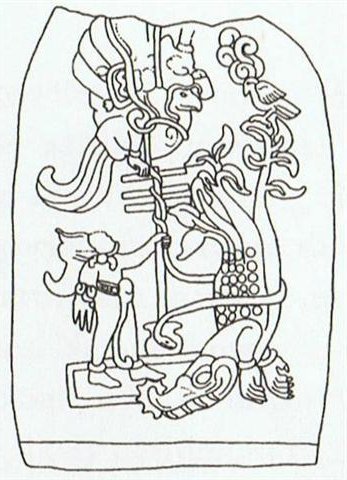 |
.jpg)
|

















.jpg)